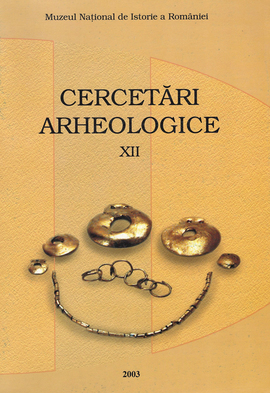O frontieră incertă a lumii romane – Câmpia Dunării de Jos în epoca lui Justinian
An uncertain frontier of the Roman world - the Lower Danube Plain in the time of Justinian
Author(s): Eugen S. TeodorSubject(s): Archaeology
Published by: MUZEUL NAȚIONAL DE ISTORIE A ROMÂNIEI
Keywords: Roman world; Lower Danube Plain; time of Justinian;
Summary/Abstract: The paper is dealing with the Lower Danube Plain for the end of Late Antiquity and its cultural equation. There are challenged some major themes of the sixth century archaeology, such Romanization, Slavic migration, spontaneous Christian practices, funerary rites, power symbols, so called “ethnic synthesis”. “Romanization” is not a very well known word, being absent from most of English dictionaries (see than the French romaniser). This is yet a crucial term for Romanian archaeology, meaning that, at some point of the history, the barbarian populations north from Danube, merged into one single people, speaking a neo-Latin language. Aculturation means not only to use another language, but acting, singing, dreaming and producing different. This is the back door used by archaeologists for sneaking in. Judging through archaeological evidence – most of it pottery – and with the back up of computing statistics, we are able to conclude today that “Romanization” is not quite a fact, for the sixth century; it is, at most, a fact in progress. The “unity of the Carpathian-Danubian-Pontic territory” is just a political goal of the modern Romania, pushed back to the Beginning. As expected, the professional and detailed study of the remains drove to the simple idea that Roman culture made a better fusion with local traditions where it was better acknowledged. That would be the former Roman provinces, like Oltenia, or border areas temporarily controlled by imperial army, like western Muntenia. On the contrary, the territories eastern from Bucharest look blind to the lights of the Roman culture, as well as Roman technologies. One have to emphasis the major part played by Oltenia to the end of the Late Antiquity too, as a cultural bridge between barbaricum and Roman world, especially Illyricum. Another scientific myth that is going to die is about archaeological evidence of the Slavic migration. A comparative study of the pottery produced in territories supposed to be the Fatherland of the Slavs, like Ukraine or Southern Poland, with pots made much closer to the Danube, gave no more that five or six “material witness” that fit the description. Of course, such a great event like Slavic migration couldn’t stand on five pots! What should we do? We could give up confusing the emerging Slavs with fearless pioneers of the Far West, and look out for something else. The testimony of the contemporary sources of the sanguinary troubles produced by Slavs in the sixth century can’t be denied, but archaeological evidence either. The apparent contradiction has to be reduced, but maybe in more than a single day. We have to imagine new scenarios for the turbulent birth of the Balkan’s medieval gens, because what we have heard in the last decades matches less and less positive facts. The Lower Danube Plain could be defined as the land of quibbling and paradoxes. Here one can find well turned ceramics, with some appearance of Roman stuff, and barbarous hand made pottery as well, in a harmonious parity. Here there are “Roman-Byzantine fibulae” (= cast fibulae), but “Slavic fibulae” (apud Werner) too. In this strange land there are cemeteries without living people around, in one corner, and settlements where nobody dies, on the other corner. The treasures are found in deserted places; the settlements are far away and poor. A fact is that they made Christian signs on wet pot, for serving Holy Cult, they made crucifixes on bronze, and made it themselves in stone moulds. Another fact is that there is any Christian tomb. All those are peculiar facts that brought together make up a unique cultural profile.The new archaeological research looks far from made it clearer; bien au contraire, some very sure things turned blur. Running out from exclusivist trenches looks yet the safest way to understand some of the life of the old folks that was never more catholic than Pope.
Journal: Cercetări Arheologice
- Issue Year: XII/2003
- Issue No: 1
- Page Range: 323-358
- Page Count: 43
- Language: Romanian

